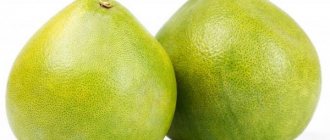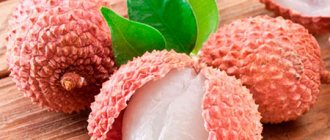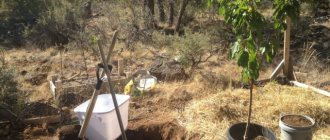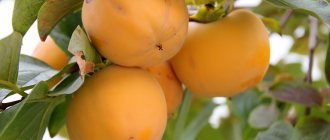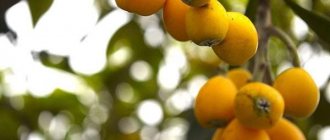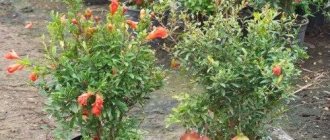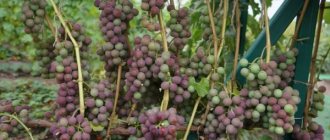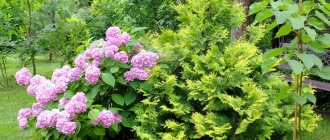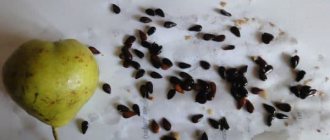Author: Natalya Category: Houseplants Published: February 20, 2019Republished: February 20, 2019Last edits: January 11, 2021
- Watering
- Pomegranate turns yellow
- Reproduction methods
- Beneficial features
tree (lat. Punica), or pomegranate , is a genus of small trees and shrubs of the Derbennikov family, which was not so long ago called the Pomegranate family. The Latin name of the plant comes from the word Punic (or Carthaginian), since pomegranate is widespread in the territory of modern Tunisia (in the distant past of Carthage). The Russian name of the tree comes from the Latin word granatus, translated meaning “grainy”. In the Ancient world, the plant was called the grain apple, and in the Middle Ages it was called the seed apple. By the way, Italians still believe that the pomegranate was the apple that tempted Eve. Today, pomegranate is found wild in Southern Europe and Western Asia. Only one species of the genus is grown in cultivation - the common pomegranate. Pomegranate fruits are not only tasty, but also healthy, and it is not surprising that many plant lovers, not being able to grow a pomegranate tree in the garden, grow it on their windowsill literally from pomegranate seeds - this is what botanists call the fruits of this southern plant. In this article we will tell you how to grow a pomegranate from a seed, how to care for a pomegranate at home, how to water a pomegranate, how to replant a pomegranate, how to plant a homemade pomegranate, why pomegranate leaves turn yellow, why pomegranates fall off, what are the harms and benefits of pomegranates , and we will also answer other questions you ask in your letters.
Planting and caring for pomegranate
- Flowering: three years after planting.
- Lighting: bright diffused light.
- Temperature: during the period of active growth – 18-25 ˚C, during the dormant period – 12-15 ˚C.
- Watering: during the growing season - often and abundantly, but during flowering, watering is reduced. In winter, watering is infrequent.
- Air humidity: in hot weather, evening spraying of leaves with warm water is recommended.
- Feeding: from spring to autumn twice a month with mineral complexes for indoor plants with a low nitrogen content. In winter, the plant is not fed.
- Dormant period: from late autumn to February. A plant in need of rest begins to shed its leaves.
- Transplantation: young plants are replanted annually, and those that have reached three years of age, only when the roots fill the earthen ball.
- Pruning: in February, to stimulate branching and give the crown shape.
- Reproduction: cuttings, grafting and seeds.
- Pests: affected by mealybugs, spider mites, scale insects, aphids, moths and whiteflies.
- Diseases: branch cancer, root rot.
Read more about growing pomegranate below.
Botanical description
The pomegranate plant is a long-lived deciduous plant from the subtropics, up to 5-6 m high in nature and rarely higher than two meters in indoor conditions. Pomegranate branches are prickly and thin. The oval and glossy light green leaves of pomegranate reach a length of 3 cm. Pomegranate flowering begins at the very end of spring and lasts all summer. The red-orange pomegranate flowers come in two types: the bisexual and pitcher-shaped pomegranate flower sets fruit, while the numerous bell-shaped flowers are sterile.
The spherical pomegranate fruit is a large berry with a leathery pericarp and can reach a diameter of 18 cm. The pomegranate peel can be yellow-orange, red-brown or any shade in between. The berry, divided into 6-12 chambers or nests located in two tiers, contains pomegranate seeds in quantities of up to 1200 or more pieces. Each seed is surrounded by a succulent cover. Pomegranates usually begin to bear fruit at the age of three. Full fruiting lasts from 7 to 40 years.
Indoor pomegranate today is as popular as indoor lemon, coffee tree, orange, mango, date palm and other exotics that cannot be grown in gardens due to the discrepancy between our climate and the conditions usual for tropical and subtropical fruit trees. But growing homemade pomegranate is a hobby for passionate people, and you should understand that your efforts may not bring the expected results. Pomegranate from seeds at home is a very realistic goal, but it can only be realized if optimal conditions for the plant are observed and timely and proper care is observed.
- Types of Cyperus with names and photos
Description of the plant
Pomegranate is a heat-loving fruit crop that is successfully grown outdoors in the southern regions. You can easily plant a pomegranate seed, which will allow you to grow a small ornamental tree that will be easy to care for. Pomegranate will not only delight you with its attractive appearance, but will also emit a pleasant aroma.
At home, with proper cultivation techniques and appropriate care, such a decorative pomegranate tree will not exceed 1 meter in height, will have a thick green crown, and several healthy and extremely tasty fruits will always ripen on the shoots at once.
You can plant pomegranates at home either from cuttings or from seeds. When using varietal cuttings, which can be easily rooted in fertile soil, the growth of the ornamental tree and its onset of fruiting are significantly accelerated. If planting was done from a seed, then the first fruits can be seen on the tree in the third year. This crop is undemanding in care; the grower will need to provide high-quality lighting to the plants and eliminate temperature changes, which are detrimental to pomegranate.
Indoor pomegranate from seed
Growing conditions
How to grow pomegranate from seed? Fresh seeds of ripe, healthy and beautiful pomegranate can be used as seed material. You should know that pomegranates sold in stores and markets are hybrids, so homemade pomegranate fruits grown from their seeds will not retain the taste of the parent variety, although the decorativeness of the plant may be beyond praise.
It is best if you get hold of a ripe and tasty indoor pomegranate fruit. The seeds are removed from the fruit and the pulp is removed. The seeds should be cream in color and feel firm to the touch - soft and greenish seeds are not suitable for growing. Soak the seeds for 12 hours in water with two or three drops of Zircon or Epin added to stimulate the germination process. The solution should not cover the seeds completely - in addition to moisture, they need oxygen.
How to plant a pomegranate
Pomegranate is grown in a loose substrate consisting of fertile soil, peat and sand. For this purpose, you can purchase universal soil for flower plants in the store - pomegranate is unpretentious to the composition of the soil.
Prepared and dried pomegranate seeds are buried 1-1.5 cm into the substrate, lightly watered, cover the container with polyethylene or glass and place in a place well lit by the sun. If pomegranate is planted at the end of winter or early spring, then in a couple of weeks you can expect seedlings to appear, and seeds planted at other times of the year can sit in the ground for several months.
How to care for a seedling
Growing pomegranate at home requires creating optimal comfort for it. The conditions for growing pomegranate include maintaining the room temperature within 25 ºC, regular ventilation and spraying the substrate with warm water.
When the first true leaves form on the seedlings, plant the seedlings, shortening the root by a third, in small separate pots with nutritious soil and a drainage layer underneath. Place the pomegranate on the lightest windowsill - it needs to be in direct sunlight for at least 2 hours a day. For sprouts that sprout in winter, you will have to arrange additional lighting.
Once the seedlings have formed three pairs of leaves, pinch them back to encourage the pomegranate to grow with two crowns. When three pairs of leaves are formed on each shoot, pinch them too so that the pomegranate grows into a lush tree.
Maintain the temperature in the room in which the young pomegranate is growing within 20 ºC, providing it with regular ventilation. In summer, it is better to take homemade pomegranate out onto the balcony or terrace, since the plant loves fresh air and sunlight. Ten months after germination, you can see pomegranate blooming.
In the fall, the tree will shed its leaves and enter a dormant state. You can, of course, make it grow in winter, but this quickly gets tired and depleted of the tree - everyone needs rest, and pomegranate is no exception. Move the indoor pomegranate to a room with a temperature of 10-12 ºC, stop feeding, reduce watering to the required minimum and let the plant rest for a month or two. After a period of dormancy, leaves will appear on the pomegranate again, and it will become more beautiful than before.
Growing pomegranate at home
The gardener will need to decide whether a seed or varietal cutting will be used for planting.
The characteristics of the grown tree and its growth rate will largely depend on this. For home planting, it is recommended to use hybrid varieties that are compact in size and easy to care for. Mandatory landing conditions:
- Drafts are completely eliminated.
- Pomegranate is grown in a spacious and bright room.
- The room must have good ventilation.
- It is best to place the pot with the seedling on the south and west side.
- In summer, plants can be placed on a glazed balcony.
If the appropriate conditions are provided, the pomegranate will grow quickly, and several years after planting it will be possible to get the first harvest.
Planting seedlings
The easiest way to grow pomegranate is from seeds, using seeds from store-bought fruit.
To obtain seeds, it is necessary to use large fruits that are free from mold, rot and various damage.
The ripe fruit is broken and a few large grains are left for planting. The germination rate of seeds is 90%, so 3-4 seeds will be enough to grow a strong tree.
The pulp is removed from the grains, and the seeds are washed under running water.
Ripe seeds should be ivory in color. Soft and green grains should not be used for planting. Prepared planting material should be soaked for 12 hours in a solution of Epin, Zircon or other growth stimulants.
Pomegranates must be planted in prepared soil from a mixture of garden soil and peat. You can also use a store-bought universal flower mixture, from which ornamental trees will receive the nutrients they need. Pomegranate seeds are planted in prepared soil to a depth of no more than one and a half centimeters. The ground is sprayed with warm water, and the top of the container is covered with polyethylene. In such greenhouse conditions with a temperature of 25-30 degrees, the seeds will quickly hatch. Pomegranate grows slowly at home, reaching a height of 70-100 centimeters by three to four years.
It has been noted that grains hatch fastest when planted in March-April and November. But if you plant a plant in winter or summer, you can expect the first shoots to appear for several months.
Seedling care
As soon as the first shoots appear in the pot, the container with seedlings should be moved to a bright place. Watering is carried out from a spray bottle, preventing the soil from drying out. As soon as the plant has three full leaves, they should be transplanted into separate pots.
To prepare nutrient soil, you need the following:
- Sand - 0.5 parts.
- Turf - 2 parts.
- Peat - 0.5 parts.
- Leaf humus - 1 part.
Caring for young plants will consist of regular and abundant watering; in winter it will be necessary to provide additional lighting, for which special phytolamps with a violet spectrum are used.
Caring for pomegranate in a pot
Watering
Water the pomegranate seedlings at the root so that water does not get on the leaves - for this it is better to use a watering can with a narrow spout. The substrate in the pot should be barely damp at all times. During pomegranate flowering, watering is reduced, but the soil in the pot should not be allowed to dry out. Water for irrigation should not be cold - 1-2 degrees warmer than the air in the room, and should stand for at least 24 hours.
The reduction in watering can be compensated by spraying the leaves of the plant with non-cold boiled water.
During the dormant period, watering the plants is reduced significantly.
Fertilizer
During the seedling period, to stimulate the development of seedlings, you can dilute half a teaspoon of wood ash in half a liter of water and water the plant with this nutrient solution. From spring to autumn, the pomegranate tree is fertilized every two weeks with universal liquid fertilizers for indoor plants.
- Beloperone – care, photos, types
If you grow pomegranate for its fruits, which you intend to eat, then it is better to fertilize not with mineral fertilizers, which contain too many nitrates, but with organic fertilizers - slurry or a solution of chicken manure. But keep in mind: if a pomegranate is overfed with nitrogen, it will not bloom, which means it will not bear fruit.
Transfer
In indoor conditions, pomegranate should grow in a cramped pot - the larger the container in which it grows, the more it forms sterile bell-shaped flowers. The first time a pomegranate is replanted is a year later. In the future, replanting is carried out no earlier than the pomegranate root fills the entire pot. Each subsequent container should be 2-3 cm larger in diameter than the previous one. When the pomegranate is 4 years old, it is no longer replanted, but the top layer of substrate in the pot is replaced annually.
Trimming
A pomegranate is formed in the form of a bush with 3-4 skeletal branches or a tree with a low trunk and 4-5 skeletal branches. Subsequently, 4-5 second-order branches are laid on each skeletal branch, on which third-order branches can subsequently be formed. Excess and fatty shoots are cut out, as well as root shoots. With age, old branches that will no longer produce crops are cut out. Pomegranate bears fruit on the shoots of the current year.
Features of cultivation
This is an unpretentious crop that all gardeners can cope with growing at home. You just need to follow the following care instructions:
- The optimal temperature for pomegranate is between 18-25 degrees. In winter, it is best to lower the temperature to 15 degrees, and in the spring, as soon as the last frosts have passed, you can move the pot with the plant to the front garden or glazed balcony.
- Pomegranate is extremely critical to lack of moisture. With infrequent watering, the earthen ball quickly dries out, the tree begins to hurt and soon dies. It is necessary to water the pomegranate from above, which will allow the superficial root system to absorb the necessary moisture.
- Regular feeding of plants can significantly improve its fruiting performance. You can use universal fertilizers designed for indoor flowers. Ideally, this feeding should be done every two weeks. If you plan to eat grown pomegranate fruits, then you should feed the plant with mineral complexes that do not contain nitrate fertilizers.
- Young plants should be replanted annually, each new pot should be 2 centimeters larger in diameter than the previous one. By 4-5 years, the pomegranate will reach its maximum size, and it will no longer need to be replanted.
Proper crown trimming
You can get a fluffy and beautiful pomegranate bush if you perform mandatory annual pruning. This pruning is performed in February even before the active growth of new shoots begins. Trimming stimulates branching, so this kind of pruning needs to be done not only for young trees, but also for mature pomegranates with a formed crown. There should be no more than 5 pairs of leaves left on each branch after cutting.
The crown can be made oval, in the form of a ball or a pyramid.
Subsequently, the pomegranate perfectly retains its shape, and caring for the tree will not present any particular difficulty.
Sanitary pruning, which removes dried leaves and damaged branches, can be done all year round.
It is only necessary to use a high-quality disinfected tool for such work, which will eliminate infectious plant diseases.
Repeated pinching and trimming of the tops will reduce the size of ornamental trees, which will make it possible to form a bonsai in any style. When forming such a decorative tree, you can use wire to secure young shoots, with their subsequent preservation of shape.
Pests and diseases
Homemade pomegranate, like any indoor plant, can be affected by pests - mealybugs, spider mites, scale insects, aphids, moths and whiteflies. Diseases of homemade pomegranates are root cancer, Phomopsis or branch cancer, gray rot and leaf spot.
Aphids are destroyed with a two-day infusion of 40 g of tobacco in 1 liter of hot water, which, after infusion, is diluted with water 1:2 and 4 g of grated laundry soap is added to it.
Whiteflies, spider mites and scale insects die after treating the pomegranate with an infusion of garlic or onion: 20 g of husk is poured into a liter of water, left for 5 days and filtered.
You can get rid of the codling moth only by collecting fallen fruits affected by the pest and removing diseased pomegranates from the tree that have not yet fallen. To control pests, you can also use chemicals: mealybugs are eliminated by triple treating the pomegranate with an interval of 5-6 days with Confidor, Mospilan or Aktara, and spider mites are eliminated with acaricides Aktellik or Fitoverm.
Root cancer, like branch cancer, is manifested by cracking of the bark and the formation of wounds with spongy swellings, drying out of shoots, branches, and in case of severe damage, the entire tree. At the first signs of the disease, it is necessary to clean the wounds to healthy tissue, treat them with a solution of copper sulfate and cover them with garden varnish. If there are many such areas, cut the tree down to a stump - perhaps this way you will be able to save it. Most often, the disease occurs due to mechanical damage to the bark and wood of the pomegranate.
Pomegranate turns yellow
Readers often ask why pomegranates turn yellow. If you do not find pests on the pomegranate tree, in particular spider mites, then it may be suffering from too high air temperatures. Pomegranate also turns yellow if there is a lack of water in the soil, but yellowing in this case is accompanied by the appearance of dark spots on the leaves.
The pomegranate falls
If pomegranate leaves fall off, this may be a consequence of their yellowing, and the reasons for this phenomenon are the same as for sudden yellowing of leaves - spider mites or other pests, diseases, too high an air temperature or insufficient watering. Leaf fall also begins for a natural reason - pomegranate is a deciduous tree, therefore, both in indoor cultivation and in nature, pomegranates fall at the end of the growing season, when they are preparing for wintering.
Pomegranate is drying
Pomegranate leaves dry out due to insufficient air humidity or because of problems with the roots that arose because you repeatedly violated the watering regime. Smell the soil in which the pomegranate is growing, and if it smells strongly of mold, immediately transplant the plant into a new substrate, inspecting its roots and removing rotten areas if necessary. Wounds on the roots are treated with crushed coal.
How to grow pomegranate in the country
Proper planting is only the first stage of growing pomegranate. To get a strong tree capable of bearing fruit, you need to provide it with high-quality care and step by step grow pomegranate according to proven algorithms.
Watering and fertilizing
Pomegranate does not have particularly strict requirements for the amount of moisture and fertilizers. But for the rapid growth of a young tree and subsequent stable harvests, it is worth following the basic rules.
Water the pomegranate about once a week, or twice or thrice a week in hot, dry months. The soil around the pomegranate should not be waterlogged, but the soil should always remain slightly moist. After watering, it is recommended to loosen the soil - this will not allow moisture to stagnate and saturate the soil with oxygen.
As for feeding, in the first year the pomegranate will have enough fertilizer applied during planting. In the second year of life, you will need to feed the tree again with nitrogenous fertilizers in early spring and complex solutions closer to autumn, before fruiting.
Trimming
Caring for pomegranate seedlings and adult plants in open ground necessarily includes pruning. The pomegranate should be formed in the form of a spreading bush or tree on a low trunk with a large number of side branches. A pomegranate seedling is usually cut at a height of about 75 cm along the central shoot, the lowest and weakest branches are removed and about 4-5 developed shoots are left.
In subsequent years, the pomegranate is pruned at the tops of the branches by about a third of the annual growth. Every year it is necessary to carry out sanitary pruning, which consists of removing root shoots, as well as broken, dry and weak shoots.
Protection from diseases and pests
Pomegranate is a fairly disease- and pest-resistant crop, but some insects and fungal diseases also threaten this plant.
- Of the fungi, branch cancer is especially dangerous for pomegranate. The disease manifests itself primarily by cracking of the bark, drying out of the shoots and the appearance of ulcers on the branches of the tree with porous growths along the edges. Most often, cancer is provoked by low temperatures in winter, which weaken the pomegranate tree. To treat the plant, careful sanitary pruning is carried out and the cuts are treated with fungicidal agents, and subsequently the pomegranate is properly insulated during cold weather.
- Among the pests, the threat to pomegranate is the pomegranate aphid, which settles on young shoots and leaves of the plant. You can get rid of it using insecticides, homemade soap and tobacco solutions.
- The pomegranate moth can also harm the pomegranate; it lays eggs directly in the calyx of the fruit of an adult pomegranate or in damaged areas of the peel, and the emerging caterpillars eat the pomegranate fruits from the inside, which leads to the rotting of the pomegranates. Pest control is carried out by spraying with insecticides even at the stage of fruit set.
For preventive purposes, it is recommended to carefully monitor the condition of pomegranate shoots and leaves and promptly remove all diseased parts. In addition, during the fruiting period, fallen fruits that fall to the ground should be collected and destroyed so that when the fruits rot, they do not turn into an ideal environment for the proliferation of bacteria and insects.
Preparing for winter
Warming the plant for the winter is the most important stage in growing a pomegranate tree. Since at temperatures below - 10 ° C the heat-loving tree begins to freeze, immediately after harvesting it begins to be prepared for wintering.
- The lower branches of the pomegranate are tilted close to the ground and tied to pegs so that they do not straighten out.
- Leaves and young shoots, important for fruiting, are treated with Bordeaux mixture, and a dense layer of fertile soil is poured around the trunk and the soil is mulched with a layer of up to 15 cm.
- Spruce branches are laid out around the trunk, trying to cover the pomegranate branches as much as possible.
It is not necessary to remove the winter shelter immediately with the onset of spring, but only after establishing a stable positive temperature. After removing the spruce branches, the pomegranate is carefully treated with fungicides to prevent the development of fungus on the surface of the tree and in the soil near the trunk.
Pomegranate propagation
Reproduction methods
Indoor pomegranate is propagated by seed, as well as vegetatively - by grafting and cuttings. We have already written that a pomegranate grown from a seed does not always retain the varietal characteristics of the parent tree, but a varietal cutting can be grafted onto these seedlings. Pomegranates grown from cuttings and layering retain the characteristics of the mother plant completely.
Pomegranate cuttings
For cuttings, trimmings from the current year's growths about 10 cm long are prepared. Cuttings can also be cut from root shoots. First, the cuttings are placed for 6 hours with the lower cut in a solution of a root formation stimulator, then they are washed under running water and planted in a substrate consisting of equal proportions of peat and sand, deepening the lower cut by 2-3 cm, and the cuttings are covered with a transparent sheet to create a greenhouse effect. dome or plastic bottles with the neck cut off.
Keep the cuttings on a light windowsill. When they give roots, and this can happen in 6-10 weeks, they can be planted in separate pots with soil for citrus plants or with a mixture of sand, humus, turf and leaf soil in a ratio of 1:1:2:2. If you provide the pomegranate from the cuttings with good care, it can bloom in the second or third year after planting. It is also possible to propagate pomegranates by lignified cuttings, but they take even longer to take root, and many of them die.
- Gladiolus - planting and care
Pomegranate grafting
Pomegranate can be propagated by grafting at home. To obtain a varietal plant, a varietal cutting is grafted onto a pomegranate rootstock grown from a seed. Only a fruiting pomegranate can produce the cuttings required for grafting. Grafting is carried out in different ways - it all depends on the thickness of the rootstock and scion cuttings. Currently, more than 150 types of vaccinations have been developed, and you will have to decide for yourself which one to choose.
The simplest to perform, and therefore the most common, vaccinations are considered to be simple copulation, copulation with a tongue (English), behind the bark, in the cleft, in the butt and in the side cut. If the grafting is successful, the pomegranate will bloom in 3-4 years.
Features of growing pomegranate in open ground in different regions
Growing pomegranate is best done in a subtropical climate in the southernmost regions of the country. However, if the correct agricultural practices are followed, it is possible to grow pomegranate in colder regions, although in this case the pomegranate will require increased attention from the gardener.
Growing pomegranate in Crimea
Crimea is ideal for growing pomegranate trees - throughout the year it maintains exactly the weather that pomegranate prefers. Planting and caring for pomegranates in Crimea means that the pomegranate is watered and fed in a timely manner, as well as regular formative and sanitary pruning.
Since winters in Crimea are quite warm, before the onset of cold weather it is enough to carefully cover the pomegranate with spruce branches and mulch the ground around the trunk with a thick layer. This must be done at the end of October, after fruiting has ended.
Growing pomegranate in the Krasnodar region
The Krasnodar region is another comfortable zone for pomegranate in Russia. As in Crimea, winters here are mild, so gardeners can only provide basic pomegranate care - watering, fertilizing and regular pruning.
Since even in warm winters pomegranate can freeze severely, it is necessary to cover and thoroughly mulch the tree before the onset of cold weather. But pomegranate can easily tolerate temperatures down to -10°C or -15°C with basic care.
Growing pomegranate in the Moscow region
Pomegranate takes root in central Russia with great difficulty, since even warm winters in the Moscow region are accompanied by at least a couple of weeks of severe frosts. When the temperature drops below - 15 ° C or - 17 ° C, the pomegranate will inevitably freeze, at best above the surface of the earth, and at worst - to the very roots.
In isolated cases, gardeners manage to ensure a safe winter for the pomegranate by building a real “house” over the plant from materials impenetrable to snow and wind and covering such a hut with spruce branches and dense snow. However, pomegranates rarely bloom in such conditions, and you can’t expect them to bear fruit at all. If you want to grow pomegranate specifically to obtain juicy fruits, you should use a closed, heated greenhouse.
Growing pomegranate in Siberia
In the harsh climatic conditions of Siberia, pomegranate does not grow in the open air; there are no winters so mild here that the heat-loving tree can safely endure them. However, even in Siberia, you can grow a pomegranate tree in a greenhouse, greenhouse, or indoors.
Types and varieties
Only two types of pomegranate are known - the common pomegranate (Punica granatum) and the Socotra pomegranate (Punica protopunica), which is endemic to the Yemeni island of Socotra. The Socotran pomegranate has flowers that are not crimson, but pink, and the fruits are not as large and sweet as those of the common pomegranate. You could read the description of the common pomegranate at the beginning of the article.
Due to its popularity, the dwarf pomegranate, which has a hybrid origin, is separated into a separate species, Punica nana, because it is the one that is most often grown indoors, including in the form of bonsai. The species is distinguished by its short growth - no more than 1 m - and early fruiting. Plants begin to bloom within 3-4 months, and two-year-old trees form about a dozen small fruits up to 5 cm in diameter. What makes nana pomegranate an ideal plant for growing indoors is its resistance to dry air. This species, unlike varieties of common pomegranate, almost does not shed leaves for the winter.
Breeders have developed more than 500 varieties of pomegranate, many of which can be grown indoors. For example:
- Uzbekistan - in room conditions, this variety of pomegranate grows up to 2 m. Its fruits are spherical, bright red, weighing up to 120 g, thin peel, sweet and sour grains of wine burgundy color;
- Baby is a plant up to half a meter high with single or collected in bunches of 5-7 flowers and yellow-brown with a red blush fruits with a diameter of 5-7 cm, ripening by mid-winter. Plants of this variety require artificial pollination;
- Carthage is a pomegranate that blooms from May to August with red flowers up to 4 cm in diameter and juicy, tasty, slightly sour fruits;
- Shah-nar is a variety of Azerbaijani selection with round or pear-shaped red fruits in a peel of medium thickness and with small grains of a pleasant sweet and sour taste;
- Ruby - trees of this variety grow up to 70 cm in height. They differ from plants of other varieties by having brighter ruby-colored flowers. With good care, the fruits reach a weight of 100 g and 6-8 cm in diameter.
The varieties Kzyl-anar, Vanderful, Ulfi, Lod-Zhuar, Ak-Dona, Gyuleysha red and pink, Purpurovy, Salavatsky and others are also common in garden culture. If you want to have a pomegranate at home, you can grow any variety of common pomegranate, even a vigorous one - at home it is still unlikely to grow above 2 m.
How to plant pomegranate seeds at home
There are two planting methods:
- Simple. It is necessary to pour fertile soil into the pot. Don’t get fancy, don’t make any complex mixtures of different soils. Pomegranate grows well in a universal seedling mixture. Place the grains with pulp or just the seeds. Then cover them with soil.
- Improved. If you want seedlings to appear faster, use germination. For three days, place the seeds without pulp in a cloth soaked in warm water and leave on a plate in a warm place. Change the cloth daily to prevent seed rot.
Whether or not to use growth stimulants is at your discretion. You can use any folk remedy.
Then repeat the procedure described above - plant in the ground.
Related article:
Why do ficus benjamina leaves fall? Simple tips on how to maintain a rich crown
The first step to a beautiful plant
Properties of pomegranate - harm and benefit
Beneficial features
Pomegranate is one of the healthiest fruits. Its fruits contain vitamins P, C, B12, B6, fiber, sodium, iodine, phosphorus, iron, potassium, manganese, calcium and magnesium. Pomegranate juice contains sugars - fructose and glucose, malic, tartaric, citric, oxalic, succinic, boric and other organic acids, sulfate and chloride salts, phytoncides, tannin, tannins and nitrogenous substances.
The presence in the fruits of all these substances necessary for the human body determines the beneficial properties of pomegranate. It quenches thirst, improves hematopoiesis, promoting the production of hemoglobin and the formation of red blood cells in the blood, strengthens the walls of blood vessels, the nervous system and immunity. An infusion of pomegranate fruits and flowers is one of the oldest hemostatic agents. For older people, pomegranate is recommended to restore strength after surgery.
Pomegranate is rich in vitamin K, necessary for metabolism in connective tissues and bones, and in particular for the absorption of calcium. Pomegranate slows down the development of osteoarthritis, relieving inflammation and swelling of cartilage tissue.
Pomegranate juice, which, among other things, helps normalize blood pressure, is indicated as a hematopoietic agent for diseases of the heart, circulatory system, kidneys, lungs and liver, and the estrogens contained in pomegranate ease the symptoms of menopause and help fight depression.
Pomegranate is an essential product for vegetarians, since its juice contains 15 amino acids, almost half of which are found primarily in meat products. Thus, someone who has consciously given up animal food by eating pomegranate may not experience a lack of animal proteins. Pomegranate juice has a diuretic and choleretic effect, as well as analgesic and anti-inflammatory effects.
The benefit of pomegranate is also that it is an excellent remedy for scurvy, uric acid diathesis, atherosclerosis, headaches and gastrointestinal disorders. People who have been exposed to radiation, live in areas of increased radiation and work with radioactive isotopes are strongly recommended to drink pomegranate juice. It is also indicated for anemia, hypertension, malaria, bronchial asthma and diabetes.
Containing alkaloids, pomegranate peel has a strong anthelmintic property. A decoction of it is also used for inflammation of the liver and kidneys, joints and eyes. It helps both as a gargle for a sore throat and for intestinal disorders. Pomegranate peel powder, lightly fried with olive or butter, is used as a mask for oily facial skin, as well as for the treatment of burns, cracks and abrasions.
Pomegranate seeds are an effective remedy for increasing intestinal motility and a source of valuable pomegranate oil, which, due to the high content of fat-soluble vitamins E and F, promotes rapid healing of wounds, regeneration of epidermal cells, rejuvenates and protects the human body from cancer. And pomegranate extract restores skin after too much sun exposure.
The white films separating the chambers with seeds inside the pomegranate fruit are dried and added to tea, since they have the property of balancing the state of the nervous system, relieving agitation, anxiety and relieving insomnia.
In traditional medicine, decoctions and tinctures are made from the fruits, flowers, peel, bark and seeds of pomegranate to treat anemia, stomatitis, diarrhea, burns, conjunctivitis and other diseases.
Contraindications
Pomegranate juice, saturated with acids, is contraindicated for gastritis with high acidity, gastric ulcer and duodenal ulcer. If necessary, it is heavily diluted with water. For the same reason, the harm of pomegranate can manifest itself by corroding tooth enamel, so after eating pomegranate or its juice, you need to brush your teeth and rinse your mouth thoroughly with water. The fixing property of pomegranate can cause constipation in people with problems with the digestive system, and the toxic substances contained in the peel, in case of an overdose of the decoction, can cause a strong increase in blood pressure, weakness, dizziness, convulsions, sharp blurred vision and irritation of the mucous membrane, so before using decoctions, be sure to consult your doctor.
